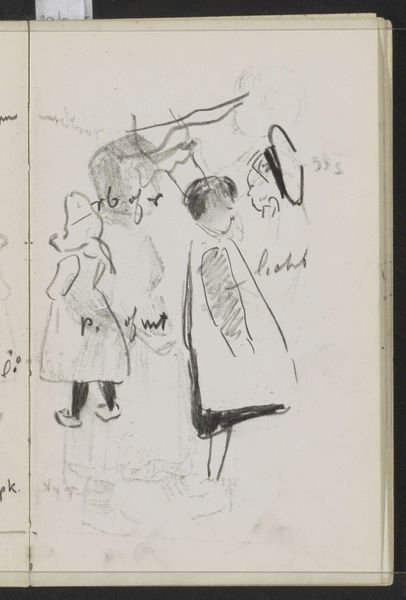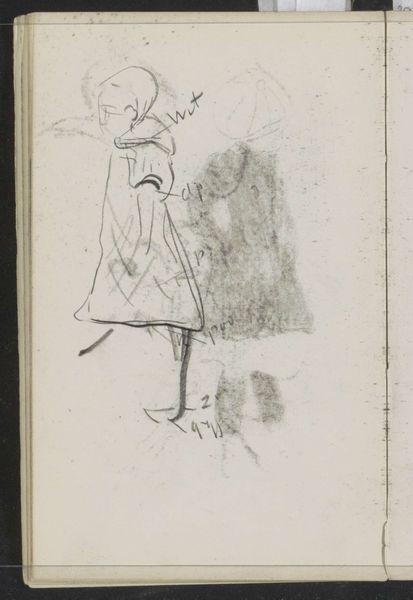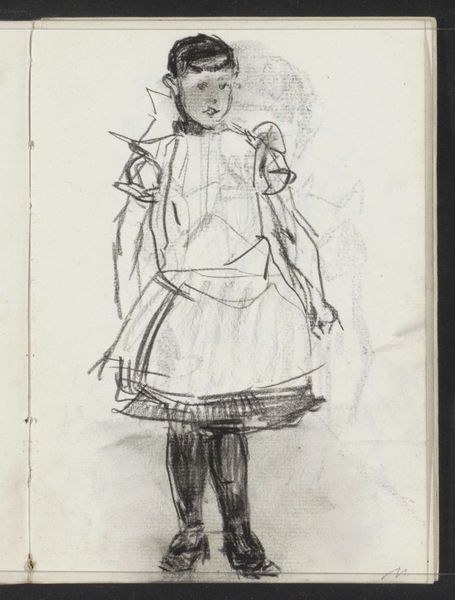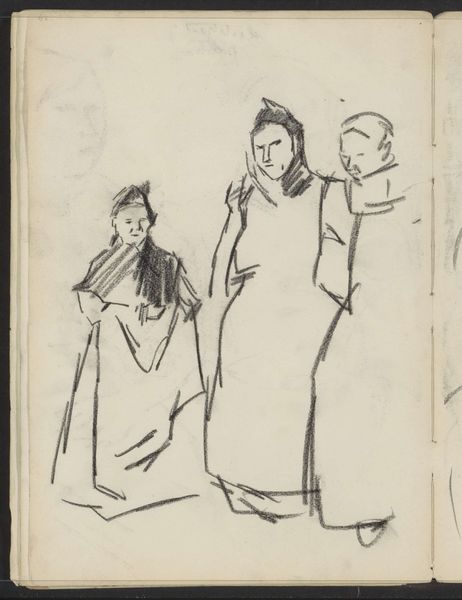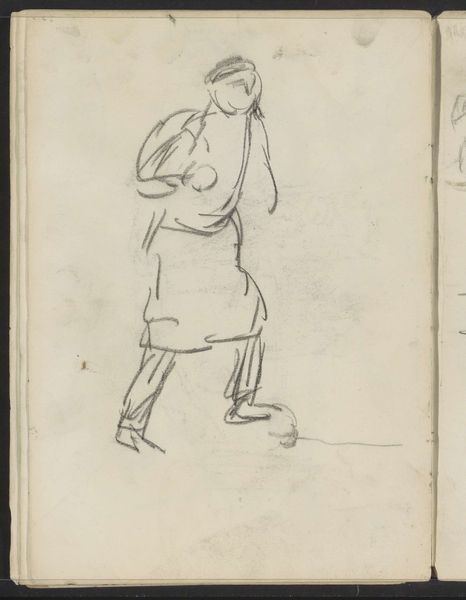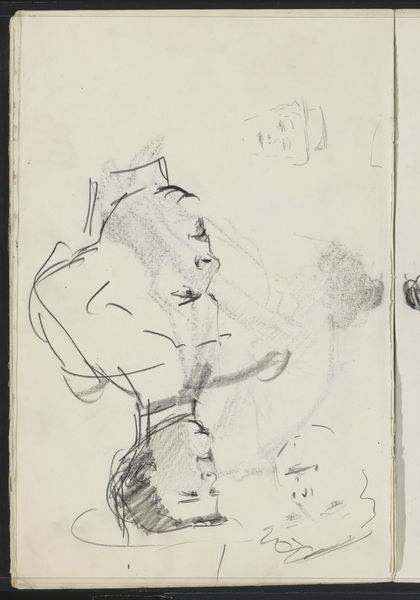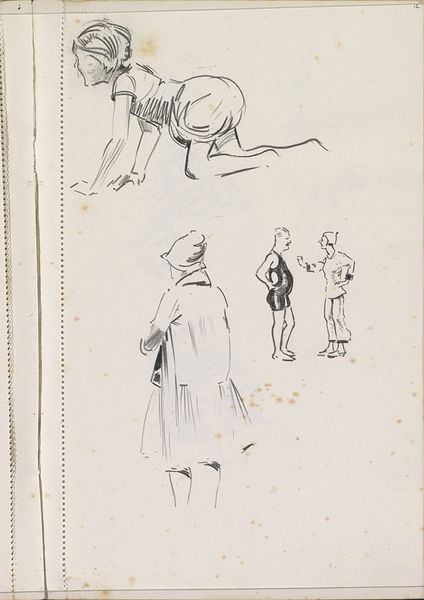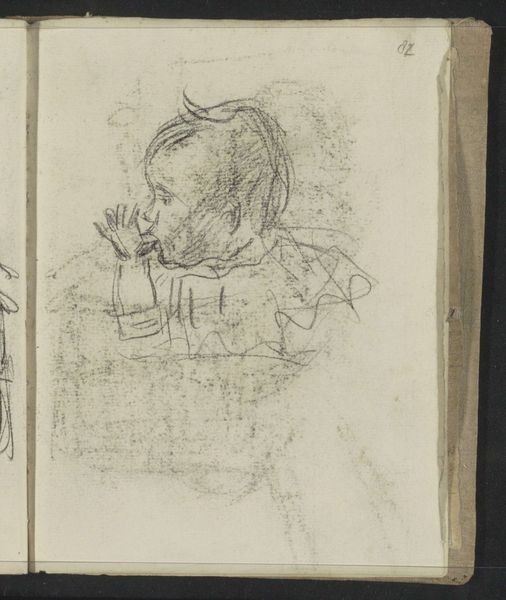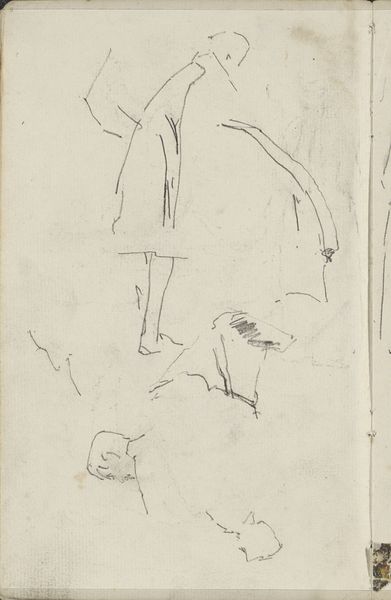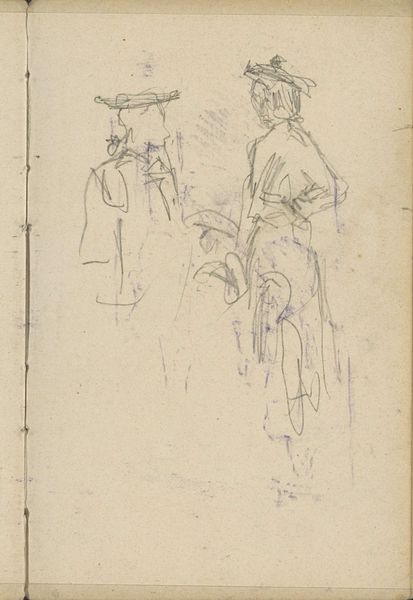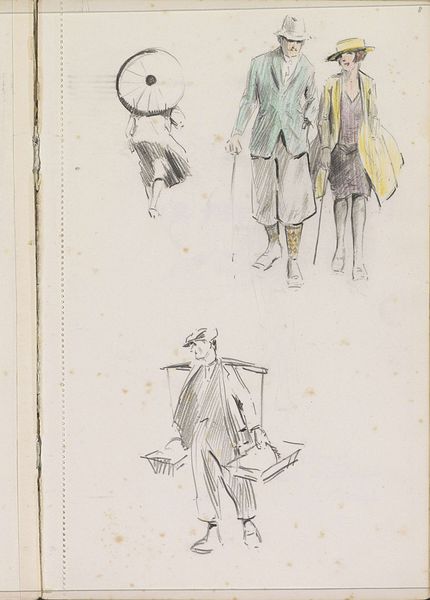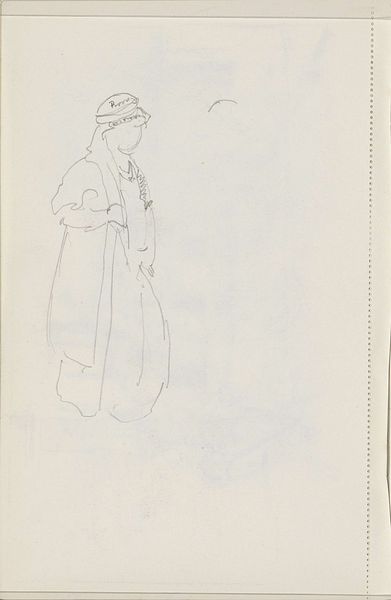
drawing, pencil
#
portrait
#
drawing
#
imaginative character sketch
#
quirky sketch
#
sketch book
#
personal sketchbook
#
idea generation sketch
#
sketchwork
#
pen-ink sketch
#
pencil
#
sketchbook drawing
#
genre-painting
#
storyboard and sketchbook work
#
sketchbook art
Copyright: Rijks Museum: Open Domain
Curator: Here we have "Peuter en een meisje in klederdracht," which translates to Toddler and a girl in traditional costume by Carel Adolph Lion Cachet, created sometime between 1874 and 1945. The medium is listed as drawing; specifically pencil and potentially ink, housed here at the Rijksmuseum. Editor: My first impression is how informal it feels, like a fleeting observation captured in a personal sketchbook. The lines are quick, economical even, yet they manage to convey so much about form and texture. Curator: Absolutely. I find myself thinking about the social conditions of the period, wondering about the roles and expectations placed upon children, especially girls, within Dutch society, and how Cachet might have been reflecting or perhaps subtly commenting on this dynamic. Editor: Focusing on form, I am struck by the contrast between the two figures: the toddler seems more abstract, almost a collection of shapes suggesting youth and innocence. Meanwhile, the older girl possesses a clearer outline and stance, indicative of her maturing self-awareness. Notice the tonal variation giving subtle shadows, it enriches the sketch beyond just being lines on a page. Curator: I agree. And perhaps that difference speaks to the evolving relationship between childhood and adolescence within a rapidly changing economic system. Cachet was working during a time of great social and economic shifts, so his artwork would have reflected those concerns directly or indirectly. Editor: Consider, also, how Cachet frames these figures. They exist in a space defined only by the sketchbook page itself, divorced from any specific location. This isolates their forms, inviting us to concentrate purely on their composition and relationality. The subtle annotations around them even suggest dimensions and fabric notes! Curator: Yes, thinking of the medium. The sketchbook itself transforms the artwork into a repository for fleeting impressions and perhaps economic documentation like fabric sample for the "girl". Editor: I hadn't thought of it like that before but now seeing Cachet as creating quick reference notes for perhaps his personal manufacturing business is certainly a strong consideration here! Curator: Considering both artistic form and socioeconomic status is a powerful combination in revealing history like this. Editor: I find that this gives insight beyond surface-level understanding of the traditional drawing and offers an exploration that celebrates line, tone, and compositional balance within the constraints of the sketchbook.
Comments
No comments
Be the first to comment and join the conversation on the ultimate creative platform.
